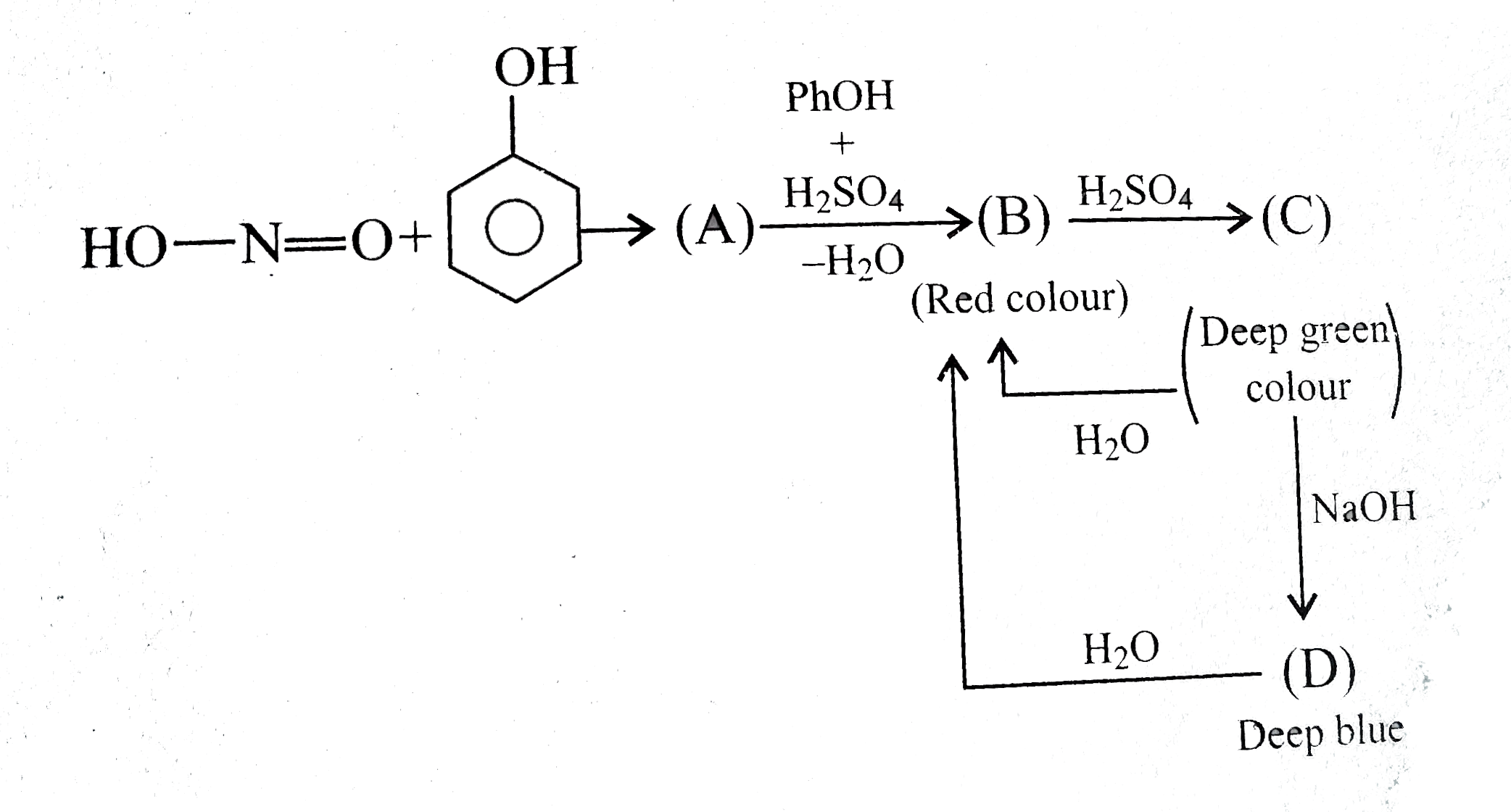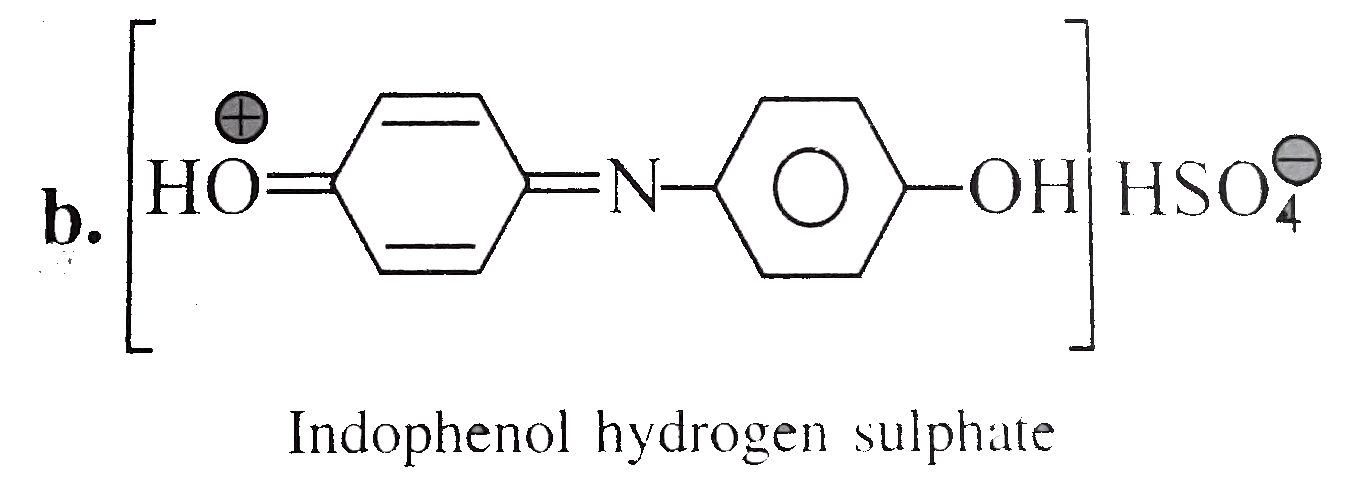
The deep blue colour of compound (D) is due to the formation of:
A
a.
B
b.
C
c.
D
d.Both and .
Video Solution
Text Solution
The correct Answer is:C
It is an example of Liebermann's nitroso reaction (test for nitroso group or test for phenol).

|
Topper's Solved these Questions
- REDUCTION AND OXIDATION REACTION OF ORGANIC COMPOUNDSBOOK - CENGAGE CHEMISTRYCHAPTER - REDUCTION AND OXIDATION REACTION OF ORGANIC COMPOUNDSEXERCISE - Exercise (Multiple Correct)
35 Videos
- REDUCTION AND OXIDATION REACTION OF ORGANIC COMPOUNDSBOOK - CENGAGE CHEMISTRYCHAPTER - REDUCTION AND OXIDATION REACTION OF ORGANIC COMPOUNDSEXERCISE - Exercise (Single Correct)
90 Videos
- REDUCTION AND OXIDATION REACTION OF ORGANIC COMPOUNDSBOOK - CENGAGE CHEMISTRYCHAPTER - REDUCTION AND OXIDATION REACTION OF ORGANIC COMPOUNDSEXERCISE - Exercise
11 Videos
- QUALITATIVE INORGANIC SALT ANALYSISBOOK - CENGAGE CHEMISTRYCHAPTER - QUALITATIVE INORGANIC SALT ANALYSISEXERCISE - Viva Voce Questions And Part-C (Analysis Of Cations)
42 Videos
- SOLID STATEBOOK - CENGAGE CHEMISTRYCHAPTER - SOLID STATEEXERCISE - Ex 1.2 (Objective)
9 Videos
Similar Questions
Knowledge Check

The red colour of compound (B) is due to the formation of:Aa. Bb.
Bb. Cc.
Cc. Dd.Both (a) and (b).
Dd.Both (a) and (b).When ammonia is added to cupric salt solution, the deep blue colour is observed it is due to the formation of:
A[Cu(OH)4]2−B[Cu(NH3)4]2+C[Cu(H2O)2(NH3)2]2+D[Cu(H2O)4]2−When ammonia is added to cupric salt solution, the deep blue colour is observed it is due to the formation of:
A[Cu(OH)4]2−B[Cu(NH3)4]2+C[Cu(H2O)2(NH3)2]2+D[Cu(H2O)4]2−
In Lassaigne's test for the detection of nitrogen, the blue colouration is due to the formation of
View SolutionIn the Borax bead test of Co2+, the blue colour of bead is due to the formation of :
View SolutionFe+3 ions in an aqueous solution gives deep red colouration with both sodium acetate (in excess) and ammonium thiocyanate (slightly acidic). The deep red colouration obtained with ammonium thiocyanate gets decolourised on addition of a solution containing F− ions.
The deep red colouration is due to the formation of:
View SolutionWhen K4[Fe(CN)6] is treated with FeCI3 a blue colour is obtained It is due to the formation of .
View SolutionThe colour of the borax bead is due to the formation of a/an
View Solution
